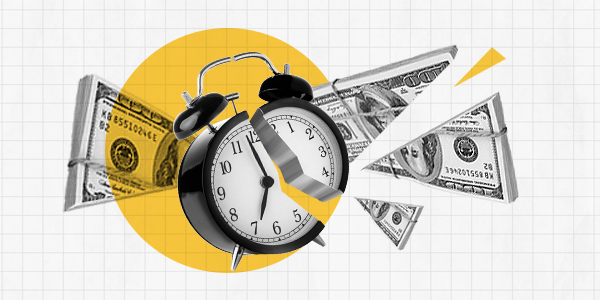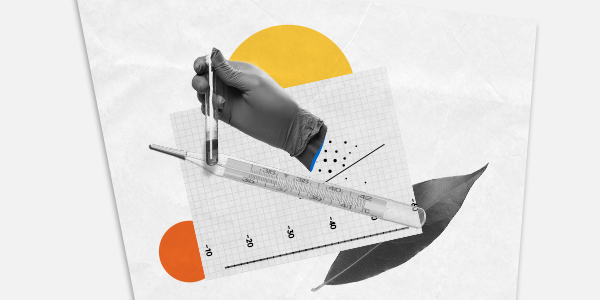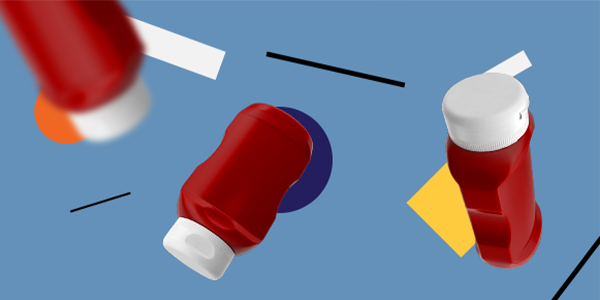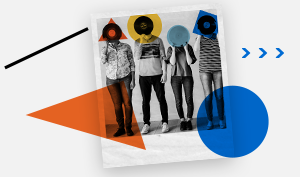Bryan Pearson is the Retail and Loyalty Marketing Executive, Former CEO and President of LoyaltyOne.

With more than two decades of experience developing meaningful customer relationships for some of the world’s leading companies, Bryan Pearson is an internationally recognized expert, author, and speaker on customer loyalty and marketing. As former President and CEO of LoyaltyOne, a pioneer in loyalty strategies and measured marketing, he leveraged the knowledge of 120 million customer relationships over 20 years to create relevant communications and enhanced shopper experiences.
In May 2012, Bryan published “The Loyalty Leap: Turning Customer Information into Customer Intimacy”. The bestselling book draws on Bryan’s first-hand experience in building emotional loyalty in an information age and details strategies for building unwavering customer loyalty while also navigating the minefields of privacy. In July 2013, Bryan published a companion e-book titled “The Loyalty Leap for B2B” to address the specific needs of business-to-business marketers.
In this conversation, Kelly and Bryan discuss what it’s like to be an early adopter of scientific thinking and a data-based approach in the business world, and how we can shift to more thoughtful and evidence-based strategies.
KEY TAKEAWAYS ON...
HOW CAN WE SHIFT BUSINESS LEADERS TO TAKE A MORE SCIENTIFIC APPROACH?
Kelly Peters: What I think is revolutionary in the way that you see the world is that you use the word "control group". There's such a revolution in just that simple concept.
So many marketers bring a beautiful way of seeing the world, a beautiful way of telling a human story, or trying to have a better understanding of human needs, and those are all awesome things. It's not just about making the widgets and selling the widgets; it is about caring for that customer. That is an awesome spirit that our marketers and our advertisers bring, but that scientific language that you develop as a child, the understanding of what a control group is, and you also used the word hypothesis. This is not vocabulary or philosophy that people are comfortable with.
Yet, I think we share the view that this is the most important way that we need to understand the world, and challenge what we believe and challenge what we even think we see with our own eyes.
In your experience, what drives that fear and what has been successful in helping you? I know that you're working with CEOs and CMOS all over the world, all the time, having these conversations. What's that been like for you?
Bryan Pearson: When we first started working in the loyalty space and starting to shine a light on who was actually shopping, and how often and what did they put in their shopping carts, and what those behaviors tell us about the dynamic of what was happening in a store, it was a world where the mindset in the retailer was really ‘pile it high and watch them buy’.
Then, we went through a period where I think digital marketing started to take off. You had the efficiency, and you had the ability to do the targeting. That was the Renaissance period where we started to get more thoughtful, and then, advertising shifted to online advertising. You have the rise of Facebook, and Google, and the reach and the targeting capabilities that were there. It's almost like the flyer reborn.
I think what happened, for a period of time, is that people were crafting a customer experience. Then, they were basically hammering away through a new form of mass advertising, which was super efficient because the cost per click was nothing to throw things out in the Google sphere, and Facebook, to target consumers. There was an element of going back to ‘pilot high and watch them buy’; we have to push things out en masse, and if it doesn't work, we'll just do version B and version C.
What I think we're seeing is a tide shifting again, back to things becoming more thoughtful. Customer journey mapping; customer experience being a competitive differentiator; people really trying to understand the dynamic of the consumers, become more segmented around the micro segments that are there, and become more intelligent again. So, I think that's one thing to drive better experimentation; the rising cost of media, cost of acquisition, cost of how you actually create the outreach are a second item.
I think the other thing is you needed a seat change to happen in the boardroom. I remember sitting back, about two decades ago, trying to push water uphill on this idea of using data and thinking about what's really happening and doing specific targeting and testing to see which offers might resonate the most—having a struggle in getting the dollars and cents investment versus the efficiency of just pushing it out in the flyer.
Between alumni of the Air Miles program, in Canada anyways, who now populated many of the largest corporations and loyalty programs across the country, and with a little bit of the seat changes, many have moved into more senior roles at all these organizations. I think we have one of the most interesting markets in the world when it comes to loyalty points, how these programs are used to architect experience, and what's actually happening. So, both those things had to happen in order to get to where we need to be.
Kelly Peters: I use this analogy of where behavioral science, and psychology, cognitive neuroscience, all of these things, can be used to help companies not just have a machine that throws a lot of spaghetti at the wall, but instead throw it in a really efficient way. To do this, we really think about the problem. Let's say we want pasta to stick to the wall, like wallpaper. Now we can start to operationalize this. Well, we actually know a lot about pasta. If we think about a vermicelli noodle or angel hair versus a ziti, we can talk about the science of different surfaces. We can talk about how much starch should be in there to increase the level of stickiness. We can talk about the science of how fast and at what angle it should be thrown.
Behavioral science is loading that machine with the kinds of pasta that we already know, at the right speed, and at the right angle, so we can get that wall wallpapered a lot faster. That's the thoughtfulness that comes from behavioral science.
HOW DO WE ENCOURAGE PEOPLE TO TAKE A SYSTEMIC APPROACH TO THE QUESTIONS THEY ARE NATURALLY CURIOUS ABOUT?
Kelly Peters: I'd love to understand curiosity from your point of view. How do you help encourage people to think about what they are curious about a little bit more systematically, rather than just let those neat little questions float away? How do you grab a hold of those and make more out of them organizationally?
Bryan Pearson: It starts with two pieces. One is observing and thinking about the industry and the dynamics that are happening at a higher level of abstraction. What's happening in the grocery world? What are the dynamics and where do people tend to be shifting their shopping? When COVID rolls around, how does that dynamically change things?
Second, and to me, the really interesting work starts once you get into the customer—segmenting the customer base and really starting to understand and find pockets of behavior you can't really reconcile. Then you ask yourself, ‘why is this happening?’ or ‘what is it about this group of consumers, which is foundationally different than this group over here?’.
The advantage we have today is the volume of information that exists and the tools that are out there, like artificial intelligence. Those kinds of things are much more able to pinpoint and pull the sorts of curious, sometimes spurious, findings out of the system, and then you have to start asking the questions.
It usually starts with solving a problem, but you do have to wander a bit and get lost in the data for a period of time and not try to force fit everything into very standard buckets as you're rolling through. We had standard methodologies around how we did segmentation, but we were always trained to look for those pockets of things which didn't make any sense.
HOW CAN WE USE BEHAVIORAL SCIENCE TO BUST CORPORATE MYTHS?
Bryan Pearson: I am still amazed by how many corporate myths have just held on forever, and nobody's ever scratched the surface of them to say, ‘are these real or not?’, ‘Is this just mythology?’.
There was a time when all the new age companies had a “data guru”, and I thought mine should be a “myth buster”. I would go into the corporate environment, and they'd say, these are our five foundational beliefs that we build everything from. Okay, which one of these do I want to take on? Because the best way to demonstrate the value of data and insight is to actually to take one of these myths apart and say, ‘you're about 20% right, but here's the other 80%’.
I remember we did a pilot for a very major retailer, a frequency retailer. When we got the data back, we saw the concentration of spend in the business followed the typical Pareto Principle: 20% of customers are generating 80% of revenue. We also showed the repeat purchasing frequency and the volume of their sales is coming from a relatively small amount of their customers. The executive just couldn't believe it. He said, “Go back and run the numbers again, that can't be right. Our customers are way more loyal than that”. We had to say no, your dynamic is pretty well like every other retailer in the universe.
That conversation really takes you down the path of what are you going to do for those customers? How are you going to treat them loyally? What is it about the other customers that's preventing them from migrating up to the same purchase patterns? What is the psychology that is causing a dramatic drop between your top 20% and the next 20%? How do you fix that? There’s so much growth opportunity for most businesses by accessing the next 20%.
Kelly Peters: This gets at one of the fundamental principles of scientific thinking that I think ought to be very disruptive in organizations.
In business, people are trained to be obligated to have answers, and not having an answer is seen as a sign of weakness; it's risky in an organization. There is also the expectation that you're coming to the table with ideas, solutions, and innovation.
One of the things that's so fascinating about science is it's actually the exact opposite. Science is all about celebrating the humility. It's about celebrating ‘I don't know’. Saying ‘I don't know’ is exciting. ‘This is something that I don't have an answer to, and I wonder if anyone does. Has anyone looked at this end?’
The power in scientific thinking is in coming up with really good questions that haven't been answered before and challenging those pre-existing beliefs. I think if we're able to inculcate this culture in the boardroom, we'll be able to unlock that curiosity, celebrate risk taking, help people democratize that innovation process inside the organization.










